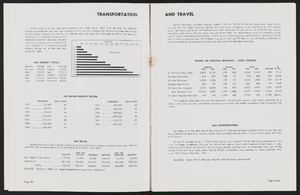Search the Special Collections and Archives Portal
Search Results
Fossil Energy Update - USDOE, 1981 June
Level of Description
Archival Collection
Collection Name: Yucca Mountain Site Characterization Office Collection
Box/Folder: Box 59
Archival Component
Review of Reports by CER/Seton Project Development, Inc., undated
Level of Description
Archival Collection
Collection Name: Yucca Mountain Site Characterization Office Collection
Box/Folder: Box 53
Archival Component
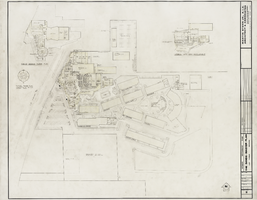
Architectural drawing of Sands Hotel (Las Vegas) additions and alterations, ultimate development plan, December 11, 1963
Date
Archival Collection
Description
Architectural plans for proposed additions and alterations to The Sands. Includes revisions. Printed on mylar. Kei Nishikawa, delineator; M. Zepeda, delineator; Berton Charles Severson, architect; Brian Walter Webb, architect.
Site Name: Sands Hotel
Address: 3355 Las Vegas Boulevard South
Image
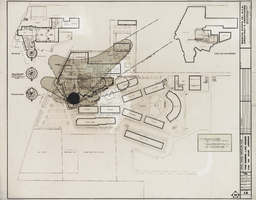
Architectural drawing of Sands Hotel (Las Vegas) additions and alterations, ultimate development plan,tower shadow projection study, February 4, 1964
Date
Archival Collection
Description
Architectural plans for proposed additions and alterations to The Sands. Printed on mylar. Notes indicate at what times of the day and year the pool area is clear of shadows. Berton Charles Severson, architect; Brian Walter Webb, architect; Frank R. Bernard, delineator.
Site Name: Sands Hotel
Address: 3355 Las Vegas Boulevard South
Image
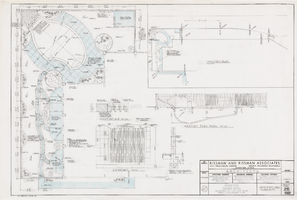
Architectural drawing of the New Frontier Hotel and Casino (Las Vegas), patio and pool area, lanai building, February 28, 1967
Date
Archival Collection
Description
Landscaping, sections, and elevations of the patio and pool area for the 1967 renovations of the New Frontier Hotel and Casino. Original medium: pencil on parchment. Socoloske, Zelner and Associates, structural engineers; Ira Tepper and Associates, mechanical engineers; J. L. Cusick and Associates, electrical engineers.
Site Name: Frontier
Address: 3120 Las Vegas Boulevard South
Image
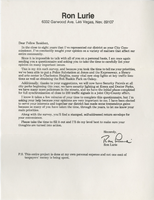
Ron Lurie campaign materials and resume, item 05
Description
Ron Lurie letter to resident & public opinion poll
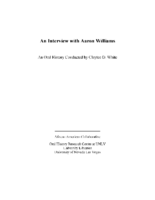
Transcript of interview with Aaron Williams by Claytee D. White, August 16, 2005
Date
Archival Collection
Description
Aaron Williams moved to Las Vegas in 1960 and worked at the Nevada Test Site before serving as North Las Vegas councilman, County Commissioner and community activist. Williams sponsored youth baseball teams in North Las Vegas.
Text
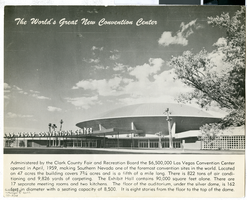
Photograph, map, and description of Las Vegas Convention center, 1959-1969
Date
Archival Collection
Description
Mixed Content
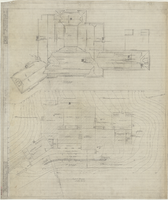
Architectural drawing of addition to pavilion at Bryce Canyon National Park, Utah, roof and plot plans, February 19, 1926
Date
Description
Roof plan and plot plan for pavilion at Bryce Canyon National Park, Utah, including additions. Scale as noted. Dr. by A.P. B., A. Sett. Tr. by A. Sett. Ch. by P.R. Gage. Sheet no. 1, Job. No. 350, date 2-19-26. Revised 6-14-26. #15774-A.
Site Name: Bryce Canyon National Park (Utah)
Image

